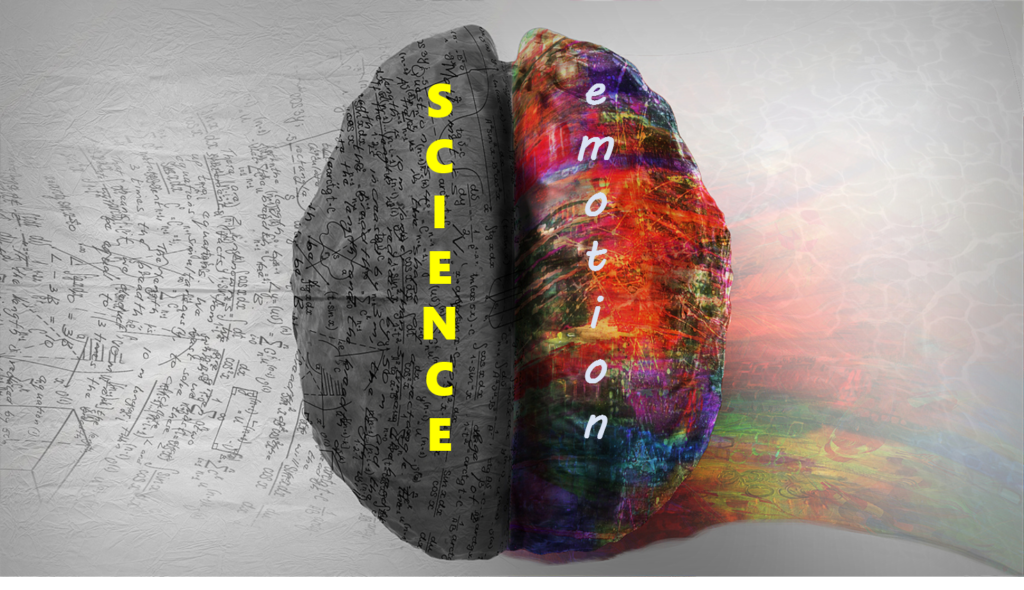 Are you a left brain or a right brain person? Neurologists tells us if your brain leans to the southpaw side, you tend to be analytical and logical (think Mr. Spock). But if your gray matter lists to the right, you’re more of an emotional, creative being (yes, that would be Captain Kirk).
Are you a left brain or a right brain person? Neurologists tells us if your brain leans to the southpaw side, you tend to be analytical and logical (think Mr. Spock). But if your gray matter lists to the right, you’re more of an emotional, creative being (yes, that would be Captain Kirk).
And when you’re in charge of programming a station, what’s the best kind of brain tilt of all?
Programmers who are data driven have more at their disposal than ever before. Between callout, the ratings, M-Scores, Media Monitors, and social/web/app analytics, there’s no shortage of nunbers and data to guide decision-making. These PDs also tend to be right at home sitting in front of their computers, writing memos, scheduling logs, and working on their budget spreadsheets.
Emotionally-driven PDs run on gut. They glance at the ratings when they roll in, and then get right back to making decisions based on experience, instinct, and emotion. Sure, they’ll check callout, but often depend on their ears to determine whether a song is worth adding or whether it’s really burned out.
So which ones are the most successful programmers? They’re the ones who are balanced between the cranial hemispheres. And in fact, many scientists maintain there is no such thing as a strictly left-brain or right-brain person.
Of course, balance is often a rarity. And that’s why smart left-brain programmers look to creative types in their midst (a music director, the morning show, or yes, even a consultant). And conversely, the right-brain types need to be sure there’s a logician on the staff who can look at a screen filled with numbers and interpret what’s going on.
These days, however, it’s not just the programming department that requires this delicate balance – it’s the entire station. And as radio companies realign and redefine as the next consolidation wave rolls out, this conversation about science and emotion will take place in the big conference room at corporate headquarters.
A new study – “Managing the Digital Age” – consisting of 22 in-depth interviews with senior communications and marketing executives by peppercomm and the Institute For Public Relations brings the dichotomy to the forefront.
The wealth of data is described by “drinking from a firehose” translates to using the analytics to understand consumer behavior. As the report states:
“Digital information and measurement comprise only part of the picture that leaders need. This need for granular data along with insights underscores the need for melding big data with a communicator’s observations, experience and instincts to interpret it.”
The study lays out 10 key steps in designing a blended strategy that melds data with instincts;
- Digital trendiness – Is the station using the new tools because they align with goals OR is it simply about using them because they’re the bright, shiny object of the moment?
- Engagement is not an end game – It’s about building loyalty and audience relationships, not just clicking “like” and “retweeting.’
- Digital channels of choice – Identifying which ones the audience cares about and actually uses is key to managing a station’s human and financial resources. (Yes, this is how our Techsurveys can help you identify your brand’s optimal platforms.)
- Internal silos – Many stations (and radio companies) run into problems because the various platforms are “owned” by different departments and/or managers. Internal communication and engagement are the key to breaking down the barriers.
- The talent puddle – Not every station has the horses to implement a 360° digital plan- in fact, very few outside the largest markets have the goods. Asssessing who can do what and by when, and how and when to outsource is essential to carving out a successful digital strategy.
- An eye on new – As we’ve learned in the past decade or so, coast at your own peril. With new apps, social media platforms, and devices like Alexa, sitting still is not an option. Someone in the organization has to wear the “tomorrow goggles” – and that means constant reading, scanning, and attending events like CES, Podcast Movement, and other forward-leaning gatherings.
- Analysis paralysis – Who at the station is the data keeper, and which metrics truly matter? These are questions that radio is struggling with, and they go to the heart of the left brain-right brain challenge.
- A data whisperer – It’s essential that someone in the company provides analysis – or it’s outsourced – to ensure logical interpretation. These people have typically not
 been a part of most broadcast operations, but are essential to a blended success.
been a part of most broadcast operations, but are essential to a blended success. - The metrics that matter – We’re well beyond Nielsen and Miller Kaplan as the sole yardsticks of success. What data defines “winning” in 2017 – and beyond? Organizations can’t function at their best when no one understands the grading system.
- Eat your own dog food – The study’s authors wisely recommend that station managers and staffers experience the entire digital ecosystem to make sure it supports the strategy. Who is monitoring social, downloading the podcasts, using the app, and listening via the stream?
And like Captain Kirk and Mr. Spock, the Enterprise always functioned best when both officers played off each other, each bringing their own unique, polar disciplines to Starfleet Command. And so it is with macro organizations like broadcast conglomerates, as well as local enterprises like radio stations.
It’s never been more challenging to command a starship as our business enters a new frontier.
Live long and prosper.
- What To Do If Your Radio Station Goes Through A Midlife Crisis - April 25, 2025
- A 2020 Lesson?It Could All Be Gone In A Flash - April 24, 2025
- How AI Can Give Radio Personalities More…PERSONALITY - April 23, 2025




Excellent piece Fred. Let’s boldly go where no programmer has gone before!
Thanks, Jason – glad you’re in the space spirit!
There should be a hard and fast rule about data gathering. If you can sit down and figure it out don’t do the research.
Not a bad philosophy, Mr. Carlisle. Thanks for chiming in.
Great
Thank you, Tom.